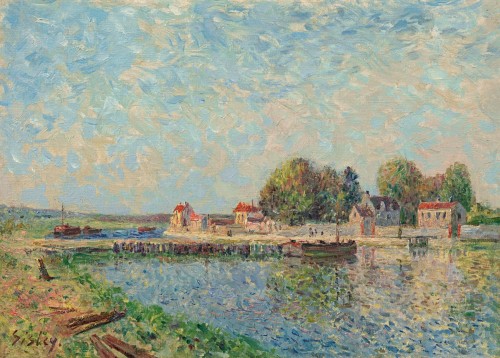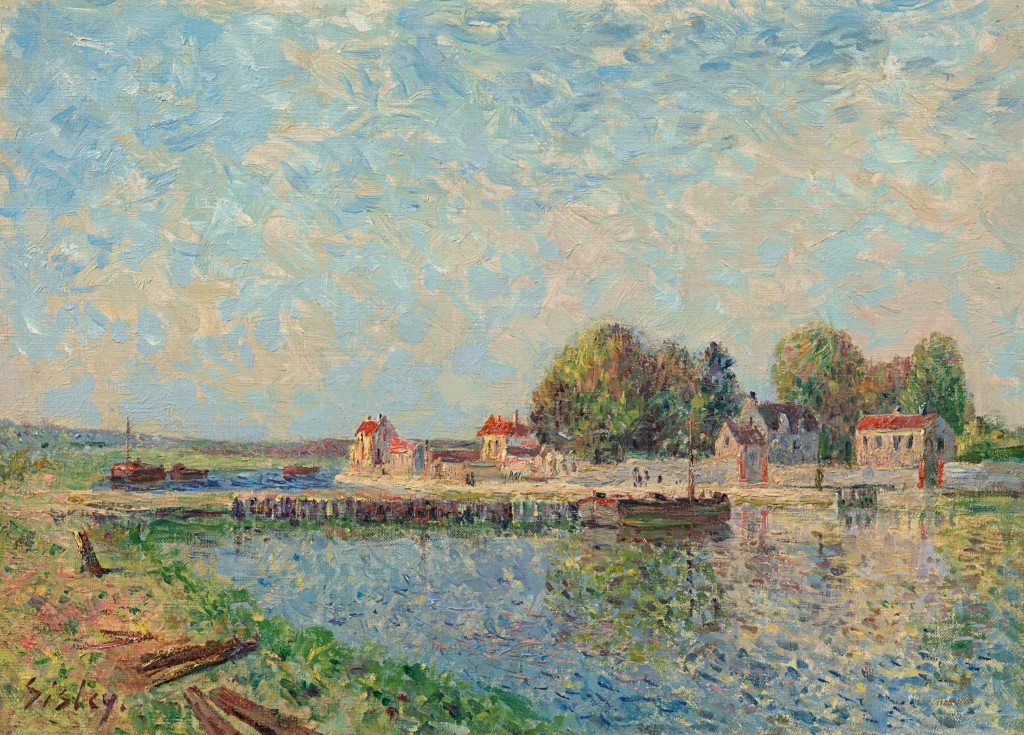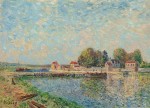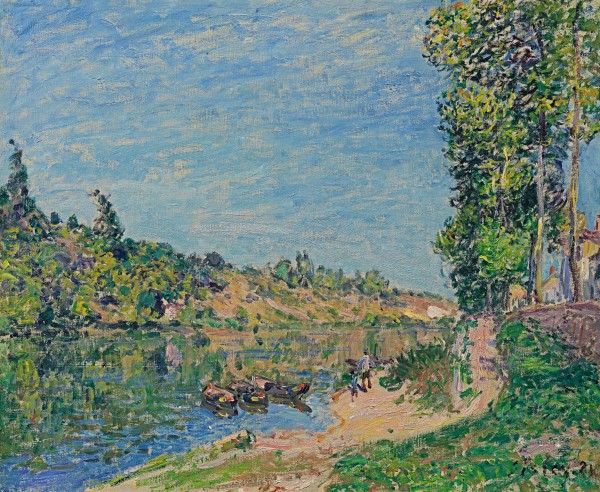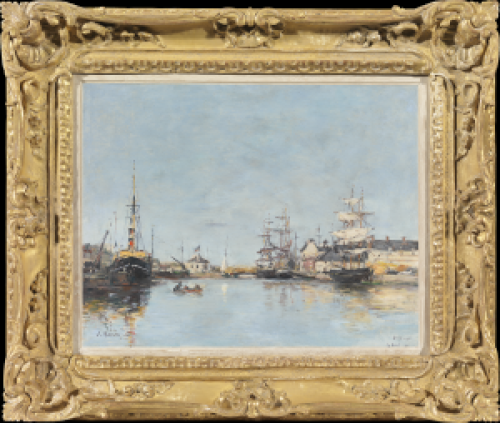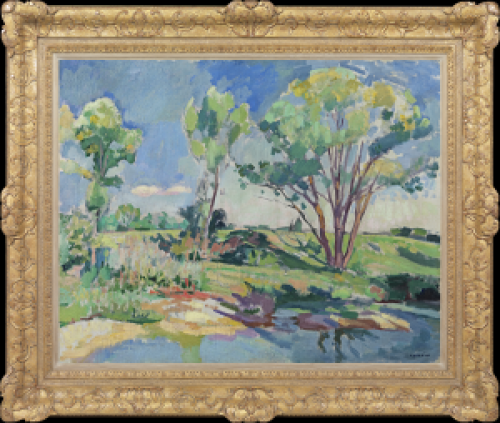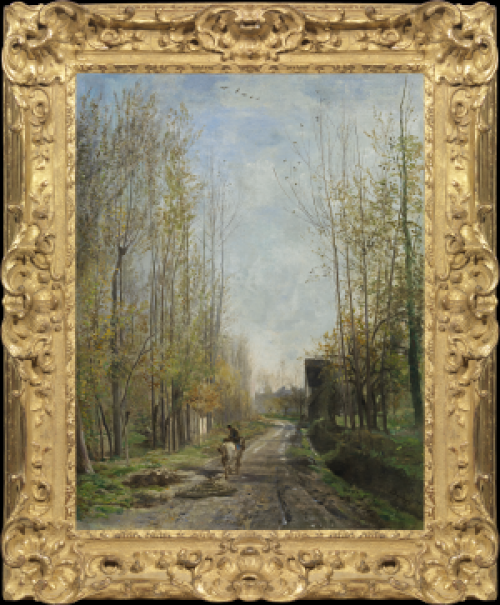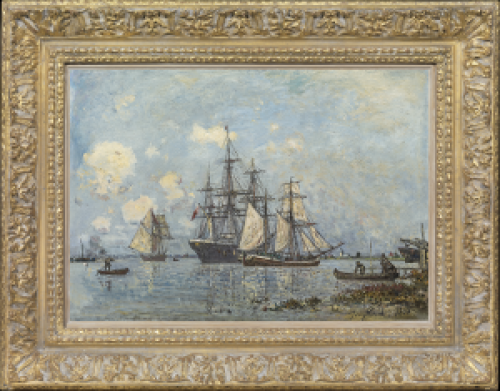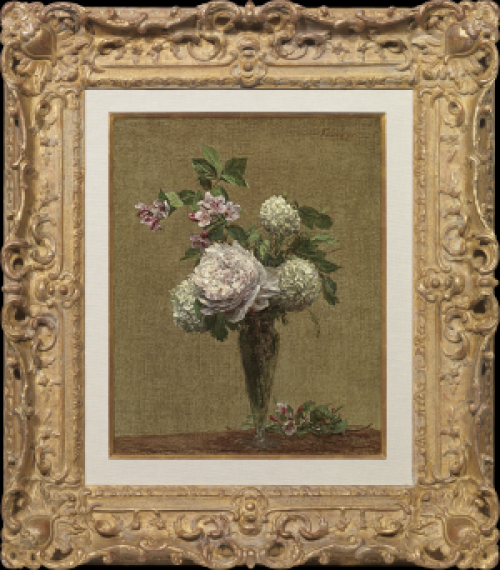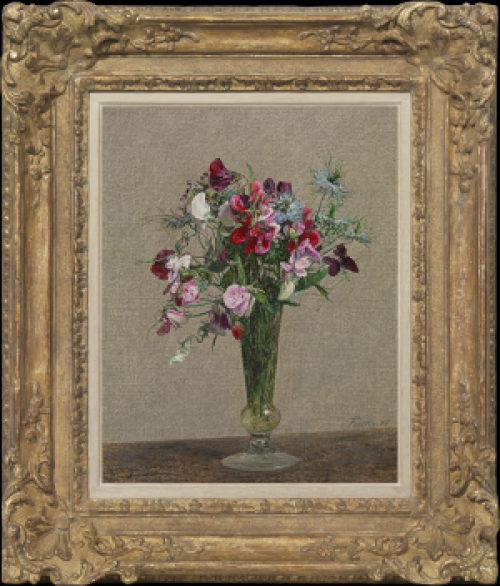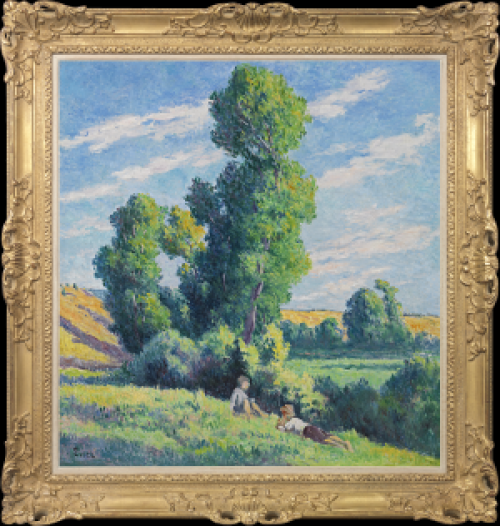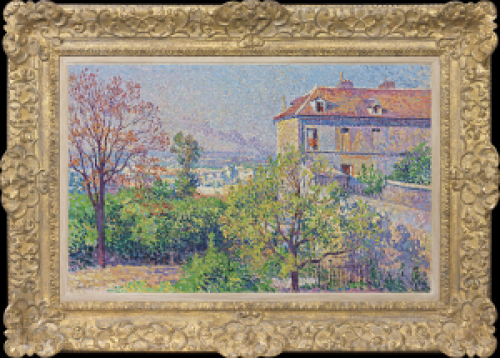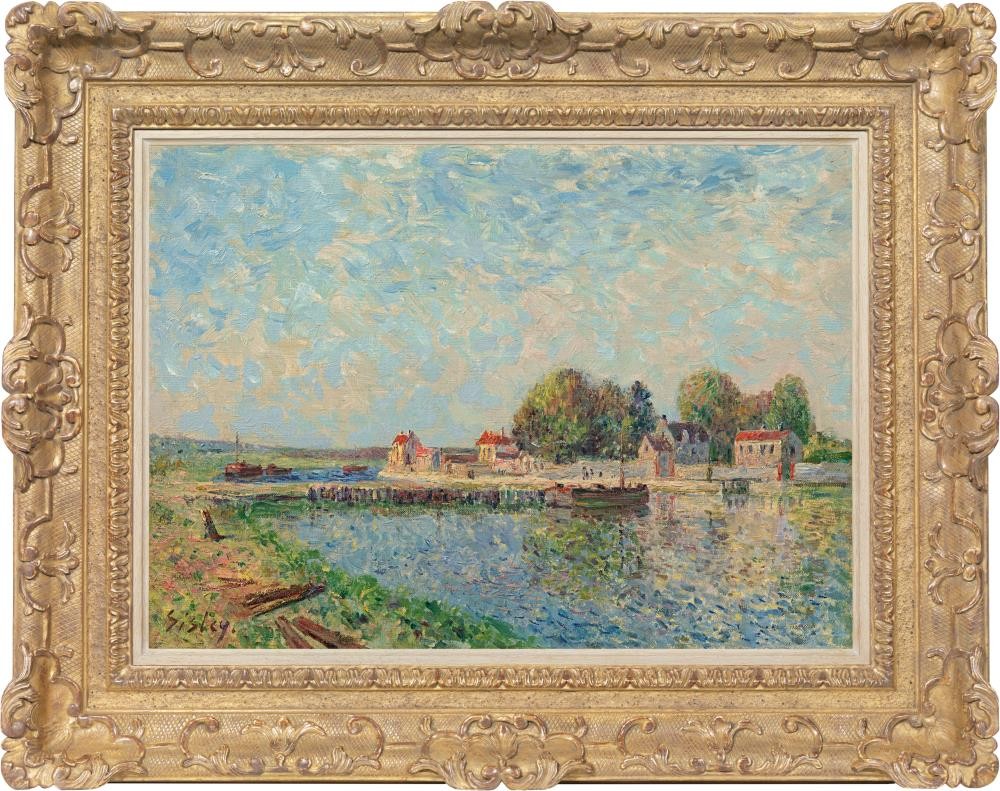ALFRED SISLEY
Paris 1839 - 1899 Moret-sur-Loing
Ref: CC 179
Le barrage à Saint-Mammès, Canal du Loing
Signed lower left: Sisley .
Oil on canvas: 13 x 18 in / 33 x 45.7 cm
Frame size: 20 x 24 ½ in / 50.8 x 62.2 cm
In a Louis XIV style carved and gilded frame
Painted circa 1885
Provenance:
Jean-Jacques Kurz, Küsnacht, Switzerland
Private collection, Switzerland
Richard Green Gallery, London
Private collection, Germany
Exhibited:
Bern, Kunstmuseum, Alfred Sisley, 16th February-13th April 1958, no.67
Literature:
F Daulte, Alfred Sisley, Catalogue raisonné de l’oeuvre peint, Lausanne 1959, no.616, illus. S Brame et F Lorenceau, Alfred Sisley, Catalogue critique des peintures et des pastels, Lausanne et Paris 2021, p.251, no.654, illus.
In the 1880s Alfred Sisley lived in Moret-sur-Loing and its adjacent villages, Les Sablons and Veneux-Nadon, near the edge of the Fontainebleau forest. The area ‘is an essentially Impressionist place with the gentle light of the Ile de France, the soft colours and the constantly changing skies of northern France. There are green woods and pastures, curving tree-lined banks of rivers, canals and narrow streams, wide stretches of river…old stone houses, churches and bridges’[1].
Like his friend Monet, Sisley liked to explore a familiar landscape in every season and mood. In 1884-5 he made a sustained campaign of paintings at Saint-Mammès, a short walk from Moret at the confluence of the Seine and the Loing. This canvas depicts the Canal du Loing, a fifty-kilometre waterway joining the Seine to the Briare Canal through a series of twenty locks. The canal network of France, linking the country’s great rivers, had developed from the seventeenth century into a sophisticated network enabling the far more efficient movement of goods than the rutted, muddy and thief-infested roads. Sisley was fascinated by the life of the river, depicting the different types of barges that plied the route, as in the present Barrage à Saint-Mammès. In 1881 he wrote to Monet about the march of ‘progress’ that affected his vision of the landscape: ‘Work has been carried out on the canal, trees cut down, quays built, banks straightened’[2].
In this work Sisley creates a vibrant meeting of water and sky as the powerful diagonal of the canal reflects the heavens filled with clouds. For Sisley, as for John Constable, whose landscapes he admired, the sky was the key element of any painting: ‘The sky itself is the medium. The sky is not simply a background: its planes give depth (for the sky has planes as well as solid ground), and the shapes of clouds give movement to a picture. What is more beautiful indeed than a summer sky with its wispy clouds idly floating across the blue?...They are like waves at sea, one is uplifted and carried away’[3]. In Le barrage à Saint-Mammès, Sisley works the sky with loose, curlicued brushwork of cream and blue, transferring this energy into the sparkling river with shorter, stabbing touches that capture the dark reflections of the foreground barge and traces of the red-roofed houses that line the bank. The composition, with its superbly modulated textures, pulsates with light. This painting is one of the most successful and vivid of Sisley’s Saint-Mammès series, with its intense juxtapositions of saturated colours: deep cobalt against yellow stucco and red tiles, the emerald green of the foreground vegetation and the pink of the pathway.
ALFRED SISLEY
Paris 1839 – 1899 Moret sur Loing
Alfred Sisley was born in Paris in 1839 into a prosperous English merchant family. He went to London at the age of eighteen to study commerce with a view to entering the family business, but soon decided to devote himself entirely to painting. Upon his return to Paris in 1863, assured of family support, Sisley entered the studio of Marc Gleyre where he met and became lifelong friends with Claude Monet and Pierre-Auguste Renoir. Sisley’s first recorded landscape dates from 1865, yet his financially comfortable circumstances may account for the fact that there are only eighteen known paintings by him pre-dating 1871.
Sisley’s lifestyle changed abruptly in 1870, the year of the Franco-Prussian War, with the death of his father and the financial ruination of his family. He was then compelled to turn to painting as a means of supporting himself. From this time on his correspondence to friends and patrons is often dominated by pleas for financial aid.
Sisley was the only Impressionist to paint landscapes almost exclusively; his chief interest was in trying to represent the mood and atmosphere of nature. Water always played an important part in his work, a subject matter which gives his paintings a joyous vibrancy and purity of tone. He lived near rivers most of his life, at Bougival, Louveciennes and Marly-le-Roi. In 1880 Sisley moved from Sèvres in the Ile de France to Veneux-Nadon near Fontainebleau and later to nearby Moret-sur-Loing, where he was based until his death in 1899.
Sisley exhibited at the Salon des Refusés in 1863, the Salon in 1866, and contributed to four major Impressionist exhibitions, from the first in 1874 until 1886. Despite a successful one-man show staged by his dealer Durand-Ruel in 1883, Sisley’s paintings found comparatively few buyers during his lifetime beyond a circle of loyal collectors. In 1897, at a large retrospective exhibition at the Galeries Georges Petit, not one painting was sold. Since 1899 Sisley’s subtle and delicate landscapes have entered major private and museum collections throughout the world and he has taken his place at the heart of the Impressionist movement.
[1] V Couldrey, Alfred Sisley: The English Impressionist, Exeter 1992, p.68.
[2] Quoted in Greenwich, Bruce Museum/Aix-en-Provence, Hôtel de Caumont, Alfred Sisley: Impressionist Master, 2017, exh. cat. by MaryAnne Stevens, Kathleen Adler and Richard Shone, p.152.
[3] Sisley writing to the art critic Adolphe Tavernier, quoted in Couldrey, op. cit., p.71.

